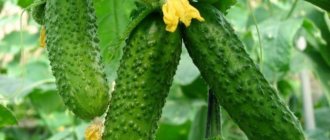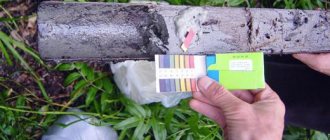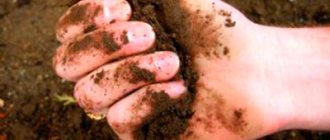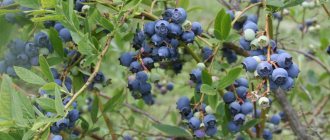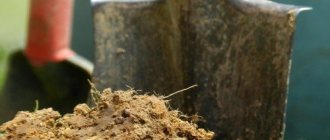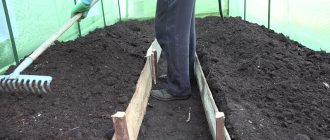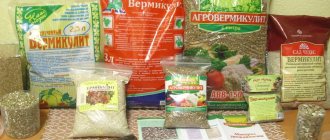The level of soil acidity (pH) is a mandatory indicator when planting berries and vegetables. Fruit trees, ornamental shrubs, and flowering plants also require a certain approach to the composition of the soil. Without a special device, you can determine acidic soil by looking at the weeds. This will not be difficult if you know which weeds grow on a particular composition.
What is soil acidity
What makes soil acidic is the reaction of hydrogen and aluminum ions. The lower the absorption of hydrogen free radicals, the more acidic the composition. For example, in neutral soils, complete breakdown of hydrogen and alkali metals occurs. A low pH level promotes the accumulation of chemical compounds harmful to plants in the soil. In acidic soil, organic matter is not processed, so there is no form of microelements necessary for plants to absorb. Hydrogen ions suppress beneficial microflora, vegetation slows down significantly.
Attention! The acidic environment is mainly in wetlands, gray soils of mixed forests, and soddy-podzolic soil.
Chernozem with a neutral composition. Gray soils and chestnut soils are alkaline. Solonetzes are highly alkaline.
Nitrogen content in soil
Nitrogen is the most important element for the growth and development of plants, especially important in the spring. At this time, the vegetative mass is being collected, and nitrogen is the building material for this. Stinging nettle, medicinal motherwort, and woodlice grow vigorously in rich, nitrogen-containing soils. You can read about the beneficial properties of these plants here.
The lack of nitrogen compounds in the soil solution is evidenced by pansies and lanceolate plantain.
What does soil acidity affect?
Before choosing plants for planting on a site, it is necessary to take into account the degree of their tolerance to acidic composition. It is difficult to obtain a harvest from a planting plot that does not meet biological needs. The nutrition of unadapted species is disrupted, the digestibility of microelements is unsatisfactory, and nitrogen starvation is observed in crops. The manifestation of negative factors increases in the rainy and cold season.
In an acidic environment, iron and aluminum turn into salts; in this composition, phosphorus, calcium, magnesium and potassium are not absorbed by plants. The growing season is weak and yields drop significantly. The root system stops branching, the supply of nutrients and water to the ground part is reduced. The culture weakens and is more susceptible to infection than a strong plant adapted to acidic soils.
Acidic soils are prone to waterlogging, and pathogenic microorganisms that are dangerous to crops develop in them. In this composition, some of the nutrients settle, and carbohydrate and protein metabolism is disrupted during the growing season. The green mass loses turgor, photosynthesis is disrupted, and the color becomes pale.
The cause of increased acidity in the soil may be:
- oversaturation with randomly applied fertilizers of one type;
- natural factors, for example, peatlands;
- non-compliance with crop rotation;
- influence of nearby chemical plants.
A change in acid level is indicated by the appearance of new weeds in the area that can only grow on this composition.
Description and harm
Moleweed is a perennial from the Umbelliferae family.
The weed can grow up to a meter in length, and very quickly forms dense thickets. Note that this plant is extremely light-loving and prefers to settle in well-lit and warmed areas of the garden. The borer quickly multiplies by self-seeding - and in a short time can cover the entire area - if you do not start taking measures to destroy it in time.
Note that this grass has a long life cycle - under favorable circumstances it can live for 50 years. Due to its natural longevity and extreme unpretentiousness, the weed is a difficult to destroy weed and belongs to the category of “malicious”.
It may also be useful for you to learn about how to destroy field bindweed in the garden.
The weed grows very quickly, increasing in length every day: such rapid growth requires a mass of nutrients, which the weed takes away from cultivated plantings, thereby depleting the soil. In addition, the borer is an aggressive plant, and quickly displaces its weaker “brothers” from the site.
The weed can cover an area in a short period of time: two years is enough for all other plants to disappear under the thickets of this grass. The spread of sedum throughout the area leads to many negative consequences. One of the most dangerous is the drying out of the soil, its depletion, and a strong decrease in fertility. As you understand, on depleted soil it is unlikely that cultivated plants will be able to produce a rich harvest. It will also be useful for you to learn how to get rid of hops in the garden.
The video shows the damage caused by the weed:
Dense thickets of weeds are an excellent habitat for pest larvae; in addition, pathogens quickly multiply in these secluded places. All this leads to damage to cultural plantings by viral diseases, fungi, rot, and pests.
Considering all these negative consequences of the reproduction of the weed, the fight against this weed must be carried out without fail. It’s also worth following the link and learning about how to get rid of sow thistle in the garden forever.
What weeds grow in acidic soils
Many weeds grow only in acidic soil, while other species grow with a slight increase in acidity. The distribution of wild herbs depends on climatic conditions. Below are photos of the main weeds that grow in very acidic soil in all regions, regardless of climate:
- Cornflower.
- Field horsetail.
- Moss is green.
- Acrid buttercup.
- Tricolor violet.
- Sorrel.
- Maryannik.
- Field navel chamomile.
A few photos of weeds growing in acidic soil with an average index:
- Bear ear.
- Sorrel-leaved knotweed.
- Mint.
- Oxalis.
- Baltic sphagnum.
What pH groups are there (table)
In gardening, acceptable indicators are data in the range of 3.5-8.5.
| pH 3.5-4 | highly acidic soils |
| pH 4.1-4.5 | very sour |
| pH 4.6-5.3 | sour |
| pH 5.4-6.3 | slightly acidic |
| pH 6.4-7.3 | neutral |
| pH 7.4-8 | slightly alkaline |
| pH 8.1-8.5 | alkaline |
It will also be useful to study the types of soil to select the optimal series of actions in the garden.
How to determine the soil by weeds
The variety of weeds on the site can tell about the soil without laboratory testing. Weeds will indicate the degree of soil fertility, its mineral composition, density and how close groundwater is located. When cultivating a plot, the same weeds grow every year. The appearance of new plants is a signal that the composition has changed. Appropriate measures must be taken.
Important! There may be different soils in one area, in which case indicator grasses are irreplaceable.
The growth of cultivated plants is negatively affected by increased levels of acid and alkali. If the plot has recently been acquired, you can determine the composition by looking at the weeds on the uncultivated land, and adjust the soil in accordance with the findings. Applying mineral fertilizers at a low pH will worsen the situation, so weeds, to some extent, are useful on the site.
Light fertile soil
Light soil is characterized by a high sand content and a small proportion of clay mineral particles. Such land is easy to cultivate, but due to its structural features, the soil is very susceptible to drying out and weathering. The fertility of light soil is significantly enhanced by binding additives, for example, peat, silt, clay flour, as well as a large amount of compost, which creates favorable conditions for the life of beneficial soil microorganisms. Among the weeds that can be found on light sandy soils are: passerine sorrel, yarrow, mustard and woodlice.
How to reduce soil acidity
It is necessary to lower the acid level only when the level is high. Vegetable and ornamental crops differ in their composition requirements. The normal growing season is possible only at a low pH level in blueberries and rhododendron. On medium-acid soils, the yield of tomatoes, carrots, parsley and pumpkins will be significantly higher than on neutral soils.
A slightly acidic composition is necessary for the following crops:
- potato;
- zucchini;
- peas;
- radish;
- eggplants.
Therefore, if nettles, wheatgrass or clover grow on the site, correction is not necessary. These are herbs that are indicators of a slightly acidic reaction.
Before adjusting the pH level, areas for crops are allocated and work is carried out in accordance with their biological requirements. There are several methods of deoxidation:
- alkali-based products;
- planting green manure plants;
- special deoxidizers.
One of the common ways to correct an acidic environment is to add lime. The depth of laying depends on the soil: in a heavy soil, the grip is approximately 20 cm, in a lighter one - 5-10 cm. If the liming is in a light form, the substance is scattered on the surface of the bed and watered abundantly.
The work is carried out in the fall; by spring the substance completely disintegrates. Neutralization before planting is not considered because lime is a substance that can cause burns to the root system.
On sandy and sandy loam soils, it is better to use chalk or dolomite flour - products with a milder effect, but no less effective. The timing of application is not limited; you can adjust the acidity indicator in spring or autumn. The advantage of dolomite flour is that it not only neutralizes the reaction, but also enriches the area with a set of microelements necessary for vegetable crops.
Zoling has been used for a long time, it is no less effective. To correct the acid level, wood or peat ash is used. Wood ash is a strong deoxidizing agent. Compliance with the norm during work is a mandatory condition, the initial application is 0.5 kg/1 m2. A one-time application will not be enough; the next season the insulation is repeated - the norm per 1 m2 is reduced in half.
Work is carried out in the spring. Ash is a multifunctional product; in addition to normalizing the acid reaction, it is effective against a number of pests. Peat ash is weaker in terms of the set of active chemical compounds, the initial rate is 2 kg/m2, subsequent processing is 1 kg/m2.
On a large plot, the method of sowing green manure plants in the fall is used. The root system of these plants loosens the soil and makes it lighter. The green mass deoxidizes and enriches the soil with nitrogen. From green manure they sow:
- rye;
- legumes;
- alfalfa;
- oats
Plants not only normalize the pH level, but also act as an organic fertilizer.
A less labor-intensive method is to add purchased ready-made preparations that help normalize the acidic environment:
- “Uglemuk” nourishes and neutralizes the area.
- “Soil deoxidizer” not only corrects the composition, but also protects the plantings from wireworms.
The funds are applied in the fall when digging the site, the effect will be visible after two years.
Complex deoxidizer preparations
A large number of ready-made complexes have appeared on sale to neutralize soil acidity and add additional nutrients. Most often, the composition of the drugs includes such elements as:
- calcium,
- magnesium,
- manganese,
- zinc,
- copper,
- molybdenum,
- cobalt,
- boron,
- phosphorus,
- and some others.
Their undeniable advantage is that there is no need to control the degree of grinding and the chemical purity of the product.
All these materials and preparations are applied to the soil in spring or autumn, thoroughly mixing with the soil to a depth of 20 cm. It is advisable that the ameliorant does not come into contact with the roots of the plants. Then the soil is watered. The acidity of the soil will change in about 2 to 3 years.
Sowing green manure is a method of deoxidation that does not harm anyone. Neither soil microorganisms, which may be harmed by excess calcium and lime, nor plants, nor groundwater. They need to be sown several times during one season, or better yet, a couple of years in a row.
Advice from experienced gardeners
Before weeding, inspect the soil for the appearance of weeds that did not previously grow on the site. They will help you respond in a timely manner to changes in the soil.
Liming is shown:
- on heavy soil - once every six years;
- on the lung – one neutralization every four years;
- on peatlands - every three years.
Normalization of the acid reaction and fertilization should not be done simultaneously. The procedures alternate: if correction is carried out in the fall, then fertilizers are applied in the spring and vice versa. If the sequence is not followed, the chemicals react with the oxidizing agent and block the flow of micronutrients to the plants.
Ash can be obtained by burning the remains of tops, corn stalks, weeds and wood waste after pruning fruit trees.
How to get rid of dreams?
People have developed a complex relationship with whining; previously, people were not always in a hurry to get rid of it at the dacha. For a long time, healers have used this herb for skin diseases, gout, burns, leg diseases, and to improve the functioning of capillaries and kidneys. In years of famine, the nutritional properties of the plant helped to escape when grain reserves were depleted. They knew how to salt and ferment for future use. This crop is considered a good fodder plant, rich in vitamins, and an excellent honey plant.
For ordinary summer residents who are not interested in using this herb to feed domestic animals or in cooking, the fight against weed in the garden often becomes a torment. Thanks to its creeping rhizome, it is extremely difficult to get rid of this green scourge forever. Mechanical operations with a shovel and hoe often lead to an even greater spread of the disease. It feels especially good in partial shade, successfully competing with cereal lawn grasses.
Drooping grass - description
It is not difficult to recognize a weed growing among green spaces. Once you read the description, you can easily find it on the site in order to get rid of the unnecessary alien in your dacha in time. It looks like this:
- The leaves of the tree are oblong-ovate, reaching 7-8 cm in length.
- The foliage, located on long petioles, is pubescent at the bottom.
- The inflorescence of this culture is umbrella-shaped.
- A bush can contain up to five thousand small flowers.
- Flowering lasts for a month in June, and at this time the lawns with flowers seem to be covered with a white cloud.
- With a peduncle, the flower stalk grows up to a meter high.
- The fruit forms a fruit in the form of a brown, flattened two-seeded seed, ripening by August, up to 4 cm long.
What kind of soil does it like to grow in?
Experienced gardeners have learned to determine the quality and structure of soil without a laboratory, by studying the crops growing on it. It loves the acidity of the soil pH 5.1-5.5, growing next to wheatgrass, dandelions, clover, chamomile, coltsfoot, and ferns. Some gardeners manage to permanently banish this weed from the flower garden by changing the composition of the soil by reducing acidity. If you grow mainly roses with chrysanthemums or bulbous plants, then try to remove the chrysanthemum by adding dolomite chips to the ground.
Remedy for sleepiness
When listing methods for combating weed, it is first worth mentioning gentle ways to permanently remove this green scourge from your dacha without the use of potent herbicides. Even such a malicious weed, which has long, penetrating roots up to half a meter, can be successfully gotten rid of using cheap physical methods. The main thing is not to neglect the territory, not to let it throw out flower stalks and spread across the area. Otherwise, you will have to purchase herbicides and flood the soil completely.
What remedies exist to get rid of sleepiness:
- At the dacha, try to mow the umbrellas in time before the flowers begin to bloom.
- Umbrellas and shoots from vegetative buds are prohibited from being placed in compost; it is better to burn them.
- A black film that prevents the passage of sunlight helps prevent sleepiness. After 2 weeks it can be removed, and the hatching shoots can be dug up and destroyed.
- In the absence of film, people use thick cardboard, sprinkled with manure. With this technique, we warm up the soil, helping to get rid of scum in the countryside in a natural way.
- If it creeps in from your neighbors, dig slate around the perimeter to a depth of more than 30 cm.
Herbicides against borer
The herbicide against borer should be used correctly, spraying it at the dacha before planting useful crops. To get rid of the unpleasant wild alien forever, you should take into account its resistance and gradual addiction to chemicals, periodically changing the drugs used. In contaminated areas, treatments must be repeated in the autumn after harvesting. In places where continuous spraying is problematic, you can mow the grass below the root collar and drip herbicide onto the cut site a couple of times at weekly intervals.
Yarutka field
Usually an annual plant, but it can also overwinter. Lives on loose soils in damp places. Welcomes the high potassium content in the soil. If yarutka appears on your site, it means that the content of this element is in the required quantity.
Weed out the weed from time to time and prevent it from flowering and forming seeds. One plant can produce 1.5 – 3 thousand seeds. If signs of excess potassium appear, conduct an agrochemical soil analysis. Also, excess potassium is easily eliminated thanks to active watering.
Recent Entries
Chainsaw or electric saw - what to choose for the garden? 4 mistakes when growing tomatoes in pots that almost all housewives make Secrets of growing seedlings from the Japanese, who are very sensitive to the soil
Manure and other soil fertilizers
What is the best way to store manure?
First, it should be folded into a loose pile and not covered with anything, so that oxygen can easily penetrate into the thickness of the manure. This will cause “burning”, the temperature will rise to 60 ° C, which will lead to the death of pest and worm larvae, as well as weed seeds.
Then, after 2-3 weeks, the “burning” should be stopped, otherwise the manure will lose a significant part of the nitrogen. To do this, you need to “cut off the oxygen” by strongly compacting the pile: the access of air into the thickness will be reduced, and the burnout process will slow down. Now the pile should be covered with film so that rain does not wash away the potassium.
In late autumn, a layer of peat or soil at least 10–15 cm thick should be thrown onto the heap so that the manure does not freeze in winter. In the spring, remove the cover and leave the film.
What natural materials can be used for fertilizer instead of manure?
Instead of manure, use compost, green organic matter, dry hay, and fallen leaves. Dig up the chopped green mass together with the soil to a depth of 8–10 cm at any time, as soon as such an opportunity arises, and it is best to add hay in the spring, before planting, in trenches, under a layer of soil 25–30 cm thick. It can be added to such trenches and food waste (except bones), tops, vegetable peelings. It is best to apply leaves in the fall under shallow digging.
How to improve the soil on the site?
At the end of summer, sow winter rye or white mustard, and in late autumn dig up the above-ground part of the mustard and rye seedlings along with the roots. The rye can be left until spring, but then it will first have to be mowed and then dug up.
You can “treat” the soil with bacterial fertilizers, which are sold in gardening stores. They are introduced into the holes when planting seedlings in the ground or greenhouse and into the furrows when sowing seeds. These are nitragen, azotobacterin, phosphorobacterin, AMB, “Bamil”, “living earth” from under Californian worms.
How to test acidity at home: folk remedies
- Pour 2 tbsp into a bottle with a narrow neck. l. with the top of the soil, fill it with 5 tbsp. l. water at room temperature. Wrap 1 tsp in a small (5x5 cm) piece of paper. crushed chalk and push it into the bottle through the neck. Release the air from the rubber fingertip and place it on the neck of the bottle. Wrap the bottle in newspaper to keep it warm by hand and shake vigorously for 5 minutes. If the soil is acidic, then when interacting with chalk in the bottle, a chemical reaction will begin with the release of carbon dioxide, the pressure will increase, and the fingertip will straighten completely. If slightly acidic, then half. If neutral, it will remain flattened. The experiment can be repeated to confirm the results.
- Take 3-4 leaves of black currant, cherry or bird cherry and brew them in a glass of boiling water, cool and drop a lump of soil there. If the water takes on a reddish tint, then the soil reaction is acidic, if it is greenish, it is slightly acidic, and if it is bluish, it is neutral.
- Another simple but tricky way: sow beet seeds in different parts of the garden. Where the beets grow large and good, the acidity is fine, but where the beets are small and underdeveloped, the soil is acidic.
- The grape juice method. Take a glass of grape juice (if it’s natural and not store-bought, it’s absolutely fine) and throw a lump of soil into it. If the composition has changed color and bubbles appear when dissolved, then the medium is neutral.
On the right you can see the formation of foam and bubbles
Testing with litmus paper (acid indicator)
A chemical way to determine the acidic or alkaline environment of the soil is to use litmus paper. It can be purchased at a chemical reagent store, and if desired, there is an option to make it yourself. The method of using ready-made and homemade indicator paper is no different.
Litmus tests usually come with instructions, so understanding the meaning of the colors is easy.
You should take a small head of red or purple cabbage, chop it and boil it in hot water. Dip small strips of paper into the resulting broth for a few seconds, then let them dry.
To determine the pH level, take a small ball of soil from your garden, moisten it and squeeze it in your palm along with one of the strips. The red color on the resulting strip will notify you that the soil is rich in acids, blue or green - alkali. Other shades can be seen in the example, but keep in mind that homemade strips are unlikely to indicate such gradations.
For each set, the readings may vary slightly, so it is better not to throw away the instructions after purchase.
All of the above methods for determining acidity are very approximate. Only a chemical test or an electronic acidity meter can give a more accurate answer.
What do weeds “talk” about?
It was no coincidence that the weeds that filled the entire area grew in such numbers. Just like cultivated plants, each weed prefers a certain type of soil. Based on how many and what kind of weeds are present on the site, you can calculate the type of soil and, if necessary, make adjustments to agricultural practices.
Amaranth upturned, or amaranth upturned
Annual plant, aggressive weed. Prefers loose, well-aerated, periodically drying, loamy, fertile soils rich in nitrogen. Amaranth in the garden is a good indicator that your soil contains enough humic substances.
What to do . Get rid of the weed before flowering, do not let it form seeds, because their number reaches up to 500 thousand, and germination persists for several decades.
Benefit . The plant is rich in protein, vitamins, its young leaves are an excellent food for domestic animals (rabbits, pigs). Close relatives - quinoa and vegetable varieties of amaranth - are considered valuable food crops.
Galinzoga parviflora
An annual plant that actively populates gardens and orchards. Grows on abundantly moist, loose, fertile soils. The presence of galinzoga in the beds and flower beds indicates that you have practically nothing to worry about - everything is fine with your soil.
What to do . Weed out the weed in a timely manner, preventing it from blooming and forming seeds; the plant is very prolific, producing from 5 to 30 thousand achenes, which remain viable for up to 5 years.
Benefit . In its homeland, in Central and South America, the plant is used as food; dry grass is added as a flavoring to various dishes.
Chickweed, or chickweed
An annual plant, prefers low-lying, well-moistened places. Beds filled with chickweed indicate fertile soil, but insufficient permeability, strong soil compaction, and poor drainage.
What to do . Loosen the soil and completely remove plants by the roots. This weed is difficult to eradicate, because it can take root from stem cuttings and produces several generations over the summer, producing up to 15 thousand seeds.
Benefit . Chickweed is an edible, vitamin-rich plant; it can be used to make salads and soups. Food with added grass is eaten with great pleasure by poultry and pigs.
Buttercup caustic
A perennial with fibrous roots, growing well in moist, poorly aerated, dense, acidic soils. The massive appearance of buttercups in the garden is a signal of the need to adjust the acidity, humidity and mechanical composition of the soil.
What to do . Add dolomite flour, chalk or lime. Eliminate stagnant water, add loosening materials (peat, rotted sawdust) to increase the permeability of the soil. These measures, in addition to regular weeding with pruning of the rosette, will not only improve the condition of the soil, but also get rid of the weed.
Benefit . The double form of buttercup is used as an ornamental plant. Used in folk medicine. The plant is poisonous!
Dandelion officinalis
The most common, very annoying weed, loves acidic, compacted soils, and can heavily clog the lawn. Considered an indicator of excess potassium in the soil, it may also indicate calcium deficiency.
What to do . Try to weed the dandelion in a timely manner, before flowering, removing the tap root. Test the density of the soil in your lawn by inserting a thin stake into the soil. If it enters the ground with great difficulty, aeration should be carried out with a special device or forks. Test the soil acidity and add deoxidizing materials if necessary.
Benefit . Dandelion root and herb are used in medicine, young leaves and flowers are edible, they are used to prepare salads and make jam.
Field sow thistle, or yellow
A perennial weed that reproduces very actively by root shoots. A moisture-loving and light-loving plant demonstrates that your site has well-aerated, fertile soil with a soil solution reaction ranging from slightly acidic to neutral.
What to do . Thistle roots take root less well in dry soil, and the plant is noticeably depressed when shaded. To suppress sow thistle, sow green manure with dense stems - rye, oats. When weeding, carefully remove root sections; they are very viable; sections 3-5 cm long take root by 90-100%.
Benefit . Thistle is a good honey plant and is used in folk medicine.
Large plantain
A weed resistant to unfavorable conditions with fibrous roots and, thanks to the tight rosette of leaves, insensitive to trampling. Indicates compacted, poorly aerated soil with high acidity.
What to do . Apply materials that deoxidize and improve the soil structure, loosen the soil in the beds and treat the lawn with an aerator or methodically pierce it with a regular fork. It is effective to trim the rosette of leaves, after which the weed does not grow back.
Benefit . Plantain is a medicinal plant recognized by scientific medicine; it is very popular among traditional healers.
Field violet
Perennial or annual plant with yellow or yellow-violet flowers. It is a weed in gardens and orchards; it develops very quickly in crops and drowns out the main crop; it loves moist soils. Easily propagated by seeds and rooting shoots. The presence of violets is a good sign. It refers to crops that are responsive to a high content of certain nutrients, and speaks of fertile soil rich in phosphorus.
Dandelion officinalis
Dandelion is the most popular weed that can seriously infest your lawn. Prefers compacted, acidic soils. Gardeners consider dandelion to be a sign of excess potassium in the soil, and its presence may also indicate a calcium deficiency.
Organize weeding the area before the dandelion blooms, while removing the taproot. Pay attention to the density of the soil. If it is hard as a rock, then it is time to aerate, check the acidity of the soil.
Field sow thistle
A perennial weed that reproduces intensively. The appearance of sow thistle shows that your beds have fertile soil. It can also grow on dry and slightly saline soil.
In order for the control of thistle to be effective, it is important to sow green manure - oats and rye. In addition, the root system of thistle grows worse in dry soil. During the weeding process, carefully remove any remaining roots. Because they are very hardy. In 90–100% of cases, root sections from three to five centimeters begin to grow well.
Weed infusion for feeding
How to prepare an infusion of weeds for feeding?
Fill the container with weeded weeds to 3/4 of its volume and fill it with water to the same level so that there is room for fermentation, otherwise the liquid will overflow during fermentation. Cover with film and tie it so that nitrogen does not evaporate from the container and oxygen does not enter it - it has been noticed that the best result is obtained with methane fermentation, that is, without access to oxygen.
After about two weeks, fermentation will be completed and the smell of a stable will appear - the infusion is ready. Dilute it with water 1:2 for root feeding and 1:5 for foliar feeding. At the same time, feeding weeds with an infusion disorients pests with their smell, and they do not touch their host plants, flying around the beds treated with an infusion of fermented weeds.
The remaining grounds can be put into compost, you can use it to mulch raspberries or pumpkin crops, covering the top with weeded weeds so as not to spoil the air with the smell of the stable. The smell can be significantly reduced if you add valerian along with the root to the container with weeds.
You can put wheatgrass along with roots, flowers of coltsfoot, dandelion, as well as all other weeds into the infusion. You should not put diseased plants in the infusion; it is better to burn them.
Where to put the thicket of fermented weeds?
In order not to bother with the grounds, you can tightly stuff old tights with weeds and lower them into the barrel, hooking them on the edge. Then the infusion will not clog the strainer at the watering can, and the tights along with the grounds should simply be buried under the apple trees along the perimeter of the crown. In a couple of years, only empty tights will remain, and all the filling will be used with apple tree roots. A barrel with a capacity of 200 liters will require 10 tights.

